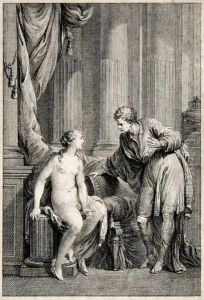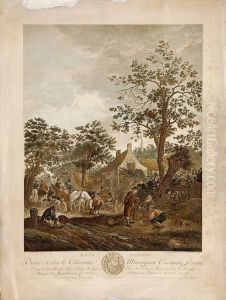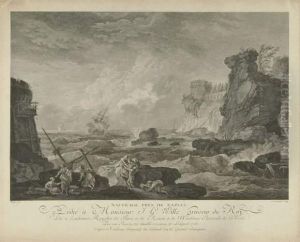Joseph De Longeuil Paintings
Joseph de Longueil, also spelled Longueil, was a French engraver born in 1730 in Lyon. His full name, including his noble title, was Joseph de Longueil, Marquis de Gergy. He was active during the 18th century, a period marked by Rococo style and a transition towards Neoclassicism in the arts.
De Longueil was trained in the art of engraving in Paris and quickly gained recognition for his skill. He is particularly noted for his fine line engravings, which exhibit a high level of detail and precision. Longueil's works often depicted classical themes and were influenced by the increasing interest in classical antiquity that was characteristic of the Neoclassical movement.
Throughout his career, Joseph de Longueil produced engravings after various well-known artists of his time, such as Nicolas Poussin, Raphael, and Antoine Watteau. He also created original compositions, portraits, and contributed to the illustration of books, a common practice for engravers of the era to supplement their income and disseminate their work widely.
De Longueil's engravings were highly sought after by collectors and connoisseurs for their beauty and technical excellence. Despite the popularity of his work, there are not many records of his life, and as such, he remains a somewhat enigmatic figure in the history of art.
Joseph de Longueil died in 1792, a year after the French Revolution began. His contributions to the art of engraving were significant, and his works continue to be studied and appreciated for their artistic merit and historical significance in the context of 18th-century French art.


